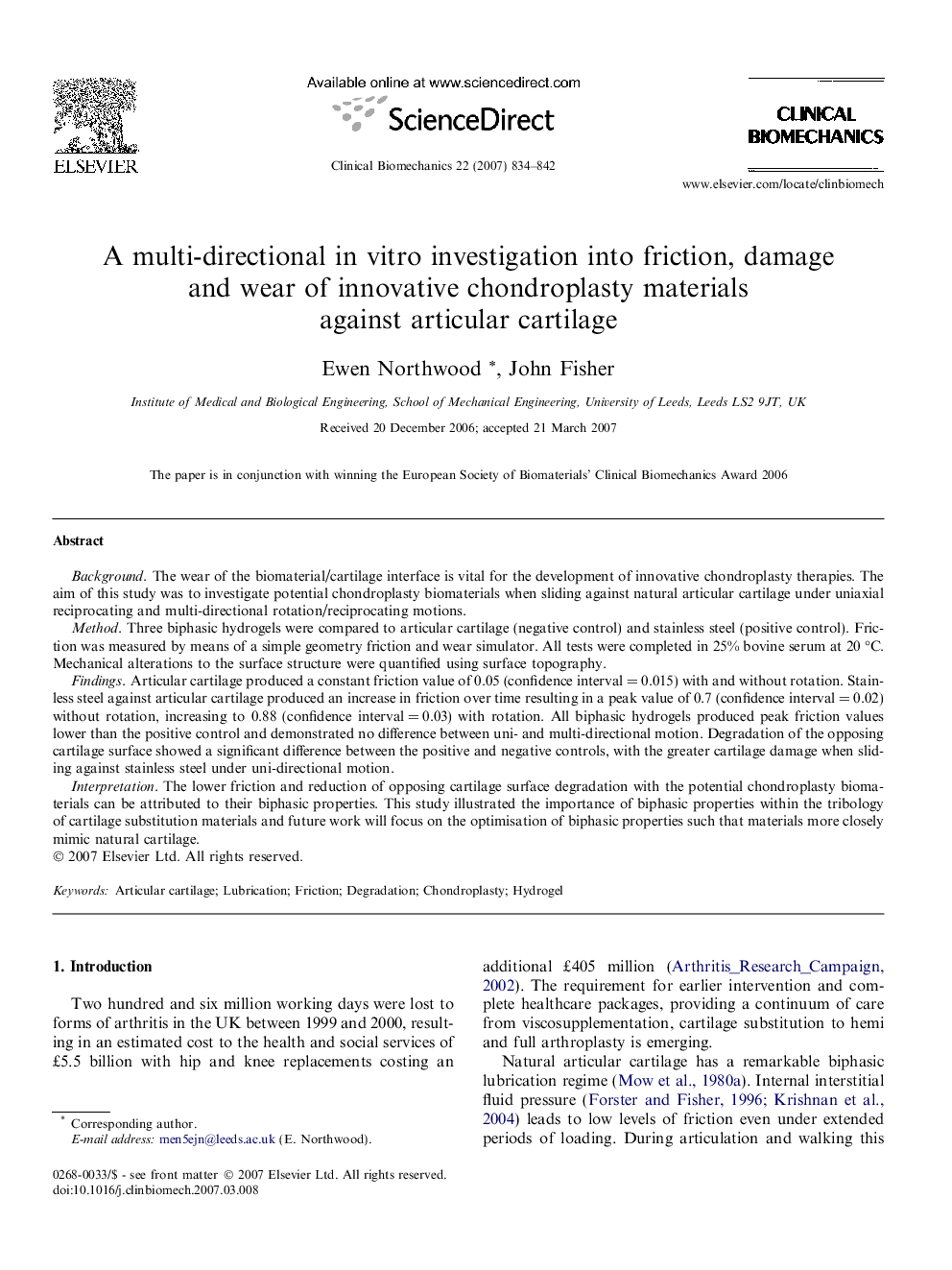| Article ID | Journal | Published Year | Pages | File Type |
|---|---|---|---|---|
| 4051266 | Clinical Biomechanics | 2007 | 9 Pages |
BackgroundThe wear of the biomaterial/cartilage interface is vital for the development of innovative chondroplasty therapies. The aim of this study was to investigate potential chondroplasty biomaterials when sliding against natural articular cartilage under uniaxial reciprocating and multi-directional rotation/reciprocating motions.MethodThree biphasic hydrogels were compared to articular cartilage (negative control) and stainless steel (positive control). Friction was measured by means of a simple geometry friction and wear simulator. All tests were completed in 25% bovine serum at 20 °C. Mechanical alterations to the surface structure were quantified using surface topography.FindingsArticular cartilage produced a constant friction value of 0.05 (confidence interval = 0.015) with and without rotation. Stainless steel against articular cartilage produced an increase in friction over time resulting in a peak value of 0.7 (confidence interval = 0.02) without rotation, increasing to 0.88 (confidence interval = 0.03) with rotation. All biphasic hydrogels produced peak friction values lower than the positive control and demonstrated no difference between uni- and multi-directional motion. Degradation of the opposing cartilage surface showed a significant difference between the positive and negative controls, with the greater cartilage damage when sliding against stainless steel under uni-directional motion.InterpretationThe lower friction and reduction of opposing cartilage surface degradation with the potential chondroplasty biomaterials can be attributed to their biphasic properties. This study illustrated the importance of biphasic properties within the tribology of cartilage substitution materials and future work will focus on the optimisation of biphasic properties such that materials more closely mimic natural cartilage.
